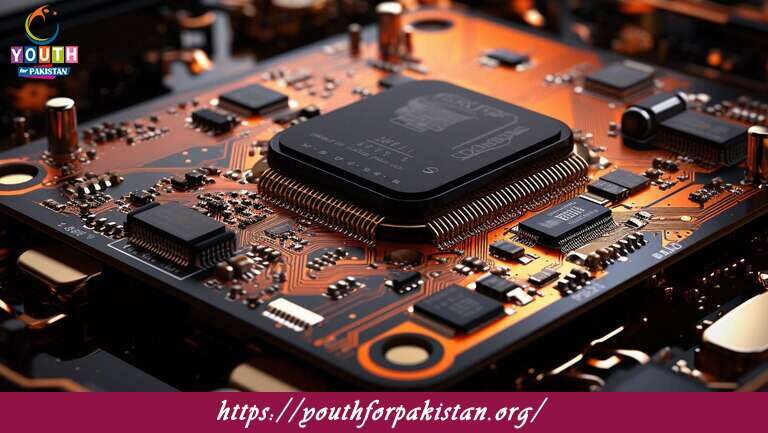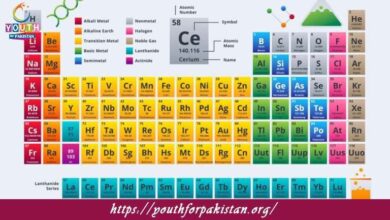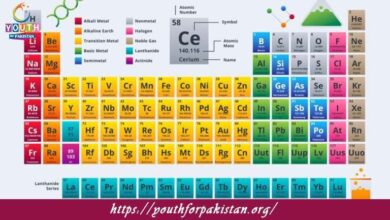12th Class Physics Chapter 18 Quiz with Answers

“12th Class Physics Chapter 18 Quiz: Electronics” covers principles related to electronics and semiconductor-based components, which include diodes and transistors in many of today’s technological applications. The chapter is crucial for MDCAT students because it enables one to understand how electronic devices work. Our MDCAT Quiz for this chapter will help test your understanding and be better prepared for any sort of related exam questions.
Introduction to Electronics
The chapter first introduces electronics as the study of the behavior and control of electrons in various materials. It elaborates on the basic building blocks that make up electronics, including conductors, insulators, and semiconductors. A conductor is a material that allows electrons to flow easily; an insulator is a material that resists electron flow, while a semiconductor has properties between the two. The behavior of semiconductors under different conditions is very important in understanding modern electronic devices, and students will learn about intrinsic and extrinsic semiconductors. Intrinsic semiconductors are pure, while extrinsic semiconductors are doped with impurities to increase their conductivity.
Diodes and Their Applications
One of the most important components in electronics is the diode, a device that allows current to flow in only one direction. The chapter explains how a PN junction diode works, where a P-type semiconductor and an N-type semiconductor are joined together, creating a region where current can only flow in one direction. Students will learn about forward bias, where the positive terminal of the battery is connected to the P-type and the negative terminal to the N-type, and reverse bias, where the connections are reversed. The Zener diode, which operates in reverse bias and is used in voltage regulation, is also discussed.
Transistors and Amplification
The next section of the chapter focuses on transistors, semiconductor devices used to amplify or switch electronic signals. The two most common kinds of transistors, discussed here, are bipolar junction transistors (BJTs) and field-effect transistors (FETs). It talks about the working of BJTs—explained in a lucid manner concerning both NPN and PNP types—how very small changes in input current cause large changes in output current. Also, transistor configurations, namely common emitter, common base, and common collector, determine the way the transistor acts within an electronic circuit. In fact, this describes the part of the transistor in the function of amplification, that is, increasing signal strength, and in the operation of switching between on and off.
Logic Gates and Digital Electronics
The chapter introduces the basics of digital electronics and focuses on logic gates—the basic building blocks of digital circuits. The most common types of logic gates, such as AND, OR, NOT, NAND, NOR, XOR, and XNOR, are discussed. These gates perform basic logical operations, while combinations of these form the basis for complex digital circuits. Students learn how these gates are used inside devices like computers, where they perform operations on binary data—1s and 0s. The idea of Boolean algebra is introduced to simplify logical expressions and design digital circuits.
Rectifiers and Filters
The chapter also discusses the use of rectifiers in converting AC to DC, a process very vital in any electronic device. It explains half-wave and full-wave rectifiers, elaborating on how they employ diodes to allow current flow in one direction only. The student will also learn about filters, which smooth out the fluctuations in the output DC voltage, hence making it more stable. Capacitor-based filters and inductor-capacitor (LC) filters are discussed in terms of their use in removing unwanted noise from signals.
MDCAT Quiz: Test Your Knowledge of Electronics
Our MDCAT Quiz for Chapter 18 covers key topics such as semiconductors, diodes, transistors, logic gates, rectifiers, and filters. The quiz will help you evaluate your understanding and be well-prepared for MDCAT exam questions related to electronics.
- Test Name: 12th Class Physics Chapter 18 Quiz
- Type: Quiz Test
- Total Questions: 30
- Total Marks: 30
- Time: 30 minutes
Note: Answer of the questions will change randomly each time you start the test, once you are finished, click the View Results button.
Free Flashcards for Electronics
Use free flashcards for Chapter 18 to revise efficiently. The flashcards cover important concepts such as diodes, transistors, logic gates, rectifiers, and digital electronics. Flashcards are a great way of really driving home key definitions, formulas, and concepts, making them easily accessible during your MDCAT.

What is the term for a circuit that provides an output signal only when certain conditions are met?
Logic gate

What is the term for a circuit that combines two or more input signals into a single output?
Summing amplifier

What is the term for a circuit that provides an output signal proportional to the difference between two input signals?
Differential amplifier

What is the term for a circuit that provides an output signal only when the input signal exceeds a certain threshold?
Comparator

What is the name of the device used to provide a stable reference voltage in electronic circuits?
Voltage reference

What type of diode allows current to flow in reverse direction when the voltage exceeds a certain value?
Zener diode

What is the term for a circuit that provides an output signal opposite in phase to its input signal?
Inverter

What is the term for a circuit that provides an output signal proportional to its input signal?
Amplifier

What is the term for the process of converting analog signals to digital signals?
Analog-to-digital conversion

Which type of transistor has three layers of semiconductor material?
Bipolar junction transistor (BJT)
Experience the real exam environment with our expertly designed collection of over 25,000 MCQs MDCAT Mock Tests.





